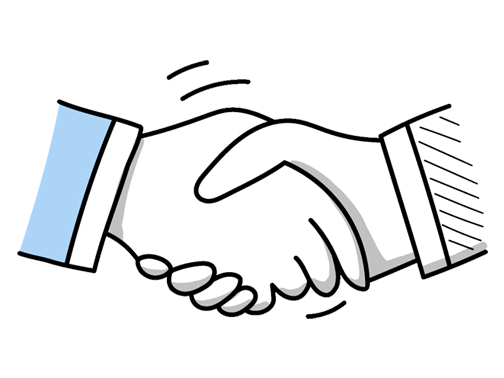Deck Officer Interview Questions (2025 Guide)
Find out common Deck Officer questions, how to answer, and tips for your next job interview
Practice Interviews Online - Identify your strengths and weakness in a realistic Deck Officer mock interview, under 10 minutes
Practice Now »Deck Officer Interview Questions
Employers ask this question to assess your understanding of safety protocols and your ability to lead during emergencies. You need to explain that you ensure clear communication of the drill, check all firefighting equipment, assign roles, and verify everyone knows the procedures to maintain safety and readiness.
Example: When conducting a fire drill on board, I start by announcing the drill clearly to the crew, ensuring everyone knows it’s a practice. I then activate the alarm and assign teams to their stations, simulating real conditions. We run through using equipment like hoses and extinguishers, emphasizing communication and coordination. Afterward, I gather feedback to improve future drills, making sure everyone stays confident and prepared.
This interview question helps assess your understanding of safety protocols and regulatory compliance when managing hazardous materials on board. You need to explain that you follow established procedures, including proper identification, segregation, documentation, and emergency preparedness to ensure safe handling and minimize risk.
Example: When handling hazardous materials on board, safety comes first. The key is to identify and classify the materials correctly, then store them according to regulations to prevent any risk. Crew members must wear proper protective gear and follow the ship’s safety guidelines closely. Regular drills and clear communication help ensure everyone knows how to respond if something goes wrong, like a spill or leak. It's about staying vigilant and prepared at all times.
What they want to know is that you understand the fundamental skills and calculations involved in celestial navigation, showing you can accurately determine the ship's position and account for errors. You should explain how you use a sextant to measure the altitude of celestial bodies at a precise time, then calculate your latitude and longitude from that data while applying necessary corrections like index error, dip, and refraction.
Example: To find the ship’s position using celestial navigation, I start by measuring the angle between a celestial body, like the sun or stars, and the horizon with a sextant. From the exact time of the sighting, I calculate the line of position, often working out latitude from the sun’s altitude at noon and then determining longitude by comparing local time with Greenwich Mean Time. I also account for factors like atmospheric refraction to improve accuracy.
What they want to know is how you prioritize crew safety by planning, communicating, and acting proactively during heavy weather. You need to explain that you hold safety briefings, secure all cargo and equipment, and continuously monitor weather conditions to make informed decisions that protect everyone onboard.
Example: When heavy weather is forecast, I make sure the crew understands their roles clearly and safety protocols are reviewed thoroughly. We secure all equipment and minimize deck activity to reduce risks. Throughout, I keep a close eye on conditions, ready to adapt plans as needed. On a past voyage, this approach helped us avoid injuries and maintain calm even as the seas became challenging.
This interview question assesses your understanding of key maritime safety regulations that directly impact your responsibilities as a deck officer. You need to explain that SOLAS sets minimum safety standards for ship construction and equipment, ensuring crew and passenger safety, and mention specific requirements like life-saving appliances and safety management, while also highlighting the legal consequences of non-compliance.
Example: The SOLAS Convention is essential because it sets the minimum safety standards for ships, helping protect lives at sea. For a deck officer, it means ensuring everything from proper lifesaving equipment to safe navigation practices complies with these rules. Non-compliance isn’t just a legal risk—it can endanger the crew and passengers. For example, following SOLAS guidelines during drills ensures everyone knows what to do in emergencies, which can save lives.
Interviewers ask this question to assess your understanding of vessel safety and regulatory compliance through stability calculations. You need to explain that you determine the center of gravity and buoyancy using vessel data, calculate stability parameters, then compare the results to UK Merchant Shipping regulations to ensure safety margins are met.
Example: When performing a stability calculation, I start by gathering the vessel’s loading condition, including weight distribution and ballast. Using stability book data, I assess the metacentric height and righting arm curves to ensure they meet safety criteria throughout the voyage. I also cross-check with IMO regulations and company policies to confirm compliance. For example, before a cargo shift, I’d verify stability margins to prevent undue heel or capsizing risk.
Interviewers ask this to assess your leadership and conflict-resolution skills, which are crucial for maintaining safety and teamwork on board. You need to say you stay calm, listen to all sides, and work with everyone involved to find a fair and effective solution.
Example: When conflicts arise among crew, I focus on listening to everyone’s perspective calmly and fairly. Understanding the root cause helps me guide the conversation toward a practical solution. For example, on a previous voyage, two team members had a misunderstanding about task responsibilities. By encouraging open communication and reminding them of our shared goals, we resolved it quickly, maintaining a positive working environment and keeping operations smooth.
Questions like this assess your understanding of safety management systems and your commitment to following established protocols. You should explain that you ensure compliance by strictly adhering to ISM procedures, conducting regular safety audits, and fostering clear communication among the crew.
Example: Ensuring compliance with the ISM Code starts with fostering a strong safety culture onboard, where everyone understands their role and responsibilities. I regularly review procedures and conduct drills to keep the crew prepared and aligned with company policies. For example, during a recent safety drill, I identified areas needing improvement and worked with the team to update our processes, which helped maintain clear communication and prevent potential incidents.
Employers ask this question to assess your understanding of fundamental navigation tools and ensure you can explain their practical uses onboard. You need to say that a gyrocompass finds true north by using the Earth's rotation and is unaffected by magnetic fields, unlike a magnetic compass which aligns with Earth’s magnetic field; this makes the gyrocompass more reliable in areas with magnetic anomalies.
Example: A gyrocompass helps us find true north using the Earth’s rotation, unlike a magnetic compass that points to magnetic north and can be affected by nearby metal or electrical fields on the ship. This makes the gyro more reliable for accurate navigation, especially near the poles or in steel vessels. For example, when navigating through crowded ports, relying on a gyro helps avoid errors that a magnetic compass might cause.
This interview question is designed to assess your understanding of safe navigation practices and your ability to manage risks in challenging environments. You need to say that you focus on maintaining proper speed, monitoring depth and traffic, and communicating effectively with your crew and other vessels.
Example: When navigating narrow channels, maintaining precise control and constant vigilance is crucial. You need to account for tides, currents, and the vessel’s maneuverability to avoid grounding or collisions. Communication with the bridge team and, if available, local pilots ensures shared awareness. I recall navigating the Thames, where adjusting speed and course carefully prevented any close calls, emphasizing patience and clear decision-making in tight waterways.
This interview question checks your understanding of critical equipment and their roles in safe navigation and ship operation. You need to clearly identify major bridge components like the radar, compass, engine order telegraph, and communication systems, explaining their basic functions in monitoring, steering, and coordinating the vessel.
Example: The ship’s bridge is essentially the command centre, housing navigation tools like the radar and GPS that help plot the vessel’s course. There’s the engine telegraph to communicate with the engine room, and the helm for steering. Instruments like the echo sounder monitor water depth, ensuring safety. Each component works together, allowing the officer on watch to maintain control and make informed decisions during the voyage.
Employers ask this question to assess your understanding of essential navigational tools and your ability to apply them practically for safe and efficient voyage planning. You need to explain the types of charts—paper, raster, and vector electronic charts—their specific uses in real-time navigation and planning, and the importance of keeping them updated for situational awareness.
Example: Navigational charts come in various forms, each suited to specific needs. Paper charts remain essential backup tools, offering detail and reliability, especially in areas with limited electronic access. Electronic charts provide real-time updates and ease of route planning, which is invaluable on modern vessels. Specialized charts, like tidal or approach charts, help with precise maneuvers in challenging waters. Choosing and regularly updating charts ensures safe, efficient navigation tailored to the voyage ahead.
Employers ask this to see how you handle stress and lead effectively when stakes are high. You need to describe a specific situation, explain how you quickly made decisions, communicated clearly, and kept the team focused despite pressure.
Example: During a challenging navigation through heavy fog, I quickly assessed the situation and gave clear instructions to the bridge team. Keeping everyone focused, I adjusted our course while managing radio communications. By staying calm and open to suggestions, we maintained safety and smooth operations despite the pressure. This experience reinforced how important steady leadership and clear communication are when conditions suddenly change.
This question assesses your understanding of safe and efficient navigation. You need to explain considering factors like weather, currents, fuel efficiency, and regulations to create the safest and most cost-effective route.
Example: Route planning starts with analyzing charts, weather, and tides to choose the safest, most efficient path. We consider traffic separation schemes and avoid restricted areas while aiming to save fuel and time. During a recent voyage, adjusting the route to bypass a developing storm helped maintain schedules and ensured safety. Constant monitoring and flexibility are key to optimizing the journey from departure to arrival.
Hiring managers ask this to see how you lead and inspire your crew to perform safely and efficiently. You need to explain how you communicate clear goals, recognize hard work, and create a positive, supportive environment to keep everyone motivated.
Example: I focus on building trust and open communication, making sure everyone feels their role matters. For example, on a previous voyage, I encouraged crew members to share ideas during briefings, which boosted morale and efficiency. Recognising effort, offering support, and leading by example usually keeps the team motivated and aligned with our shared goals. It’s about fostering a positive atmosphere where everyone wants to give their best.
What they want to know is that you understand the essential international maritime regulations like SOLAS and MARPOL, and how you apply them to ensure vessel safety and environmental protection. You need to clearly mention these conventions, give a brief example of handling compliance during inspections, and acknowledge the serious consequences of non-compliance.
Example: In my role as a deck officer, I consistently follow key regulations like SOLAS, MARPOL, and the ISM Code to ensure safety and environmental protection. For example, I’ve overseen routine safety drills and pollution prevention measures to stay compliant. Understanding these rules helps prevent accidents and fosters a strong safety culture onboard, which is vital to protecting both the crew and the vessel’s operation.
What they want to assess is your understanding of safe navigation procedures when visibility is limited. You need to explain that you continuously monitor environmental conditions using radar and AIS, keep the bridge team informed while communicating with other vessels, and adjust your navigation plan proactively to avoid hazards and ensure safety.
Example: When navigating in restricted visibility, I keep a close watch on weather and sea conditions, regularly updating my team. Communication is key, so I ensure clear and frequent contact with bridge crew and nearby vessels. I reduce speed to maintain control and stay ready to adjust course as needed. For example, in fog, I rely on radar and sound signals while preparing contingency plans to respond swiftly if situations change.
This question checks your commitment to safety and legal compliance, which are critical for a deck officer. You need to say that you regularly review official sources like MCA publications, engage in industry seminars, and apply new regulations onboard promptly to ensure ongoing compliance.
Example: I make it a point to regularly check updates from the MCA and IMO websites to ensure I’m aware of any new regulations. I also stay connected with fellow officers and attend industry seminars when possible, which often highlight practical changes on board. This way, I can apply new rules directly into our daily operations, ensuring safety and compliance are always maintained.
Questions like this assess your understanding of safe and efficient cargo handling procedures. You need to explain the steps to ensure cargo is properly secured, balanced, and documented while considering safety regulations and ship stability.
Example: Certainly. Cargo loading starts with careful planning—checking the ship’s stability and cargo compatibility. We coordinate closely with stevedores to ensure safe handling and correct stowage. Throughout, we monitor weight distribution to maintain balance. When unloading, the process reverses, with careful documentation and inspections to prevent damage. For example, during a recent timber shipment, we adjusted loading sequences to keep stability without delaying schedules. It’s all about teamwork and attention to detail.
This question assesses your understanding of how radar helps maintain situational awareness and prevents collisions at sea. You need to explain how you use radar to detect and track vessels by assessing their speed and distance, make timely decisions to avoid collisions, and communicate effectively with your bridge team about your observations and intended actions.
Example: When using radar to avoid collisions, I carefully monitor targets and assess their course and speed to gauge any risk. Interpreting radar echoes alongside visual observations helps me make informed decisions early. I also ensure clear communication with the bridge team, sharing radar information so everyone stays aware. For example, adjusting speed or altering course promptly can prevent close-quarters situations before they develop.
Employers ask this to see if you can maintain safety and teamwork through clear communication. You need to say that you establish regular briefings, encourage open dialogue, and continuously assess communication effectiveness among the crew.
Example: To keep communication smooth on deck, I make sure everyone knows how and when to share information clearly. I encourage the crew to speak up respectfully and listen actively, so no one feels left out or confused. If I notice misunderstandings, I adjust how we communicate—whether it’s using briefings, radios, or face-to-face talks—to make sure the crew stays on the same page.
This interview question tests your ability to respond quickly and effectively in a critical emergency to ensure the safety of a person overboard and the crew. In your answer, clearly state that you would immediately raise the alarm by shouting "Man Overboard" and activating the ship's alarm, coordinate the search and rescue by deploying lifebuoys and rescue boats, and maintain clear communication using radio and internal channels while documenting the incident.
Example: If someone falls overboard, the first thing I’d do is alert the crew immediately and mark the spot to keep track visually. Next, I’d organize a quick, safe response—like deploying lifebuoys and coordinating the bridge and lookout for a search pattern. Throughout, clear communication is key, ensuring everyone knows their role while keeping records of actions taken to support any investigation afterward.
Employers ask this question to ensure you understand the importance of safety and accountability on board. You need to say that you follow company protocols by immediately reporting incidents to the bridge or officer in charge, documenting all details accurately in the ship's log and incident report forms.
Example: When an incident occurs on board, the first step is to ensure everyone's safety and contain the situation if possible. Then, it’s important to report the event promptly to the officer on watch or the captain. Accurate details should be recorded in the ship’s logbook, describing what happened, when, and who was involved. For example, if there’s a near-miss during navigation, noting exact times and conditions helps with later investigations and prevention.
Employers ask this question to assess your knowledge of emergency protocols and your ability to act calmly and effectively in life-threatening situations. You need to clearly explain the steps for initiating abandonment, including sounding alarms and issuing muster calls, describe the proper use of safety equipment like lifejackets and lifeboats, and show that you understand how to communicate with crew and rescue services using radios and distress signals.
Example: In the event of abandoning ship, the captain sounds the alarm and orders the crew to their muster stations, where everyone dons lifejackets and prepares survival gear. The officer ensures all are accounted for and directs the safe boarding of lifeboats or rafts. Constant communication with rescue authorities is maintained, coordinating efforts to secure everyone’s safety, much like during routine drills that keep the crew ready for emergencies.
Hiring managers ask this to see if you prioritize safety, efficiency, and clear communication when training. You need to say you focus on hands-on guidance, clear instructions, and ensuring understanding to build confident, capable crew members.
Example: When training new crew members, I focus on creating a supportive environment where questions are welcomed. I start with clear, practical demonstrations and encourage hands-on practice to build confidence. For example, during my last voyage, I paired newcomers with experienced crew for on-the-job learning, which helped them adjust quickly and understand procedures deeply. I believe patience and open communication are key to effective training.
Ace your next Deck Officer interview with even more questions and answers
Common Interview Questions To Expect
The interviewer is looking for your motivation, passion, and understanding of the role. You can answer by discussing your skills, experience, career goals, and how they align with the responsibilities of a Deck Officer.
Example: I have always been passionate about the maritime industry and have a strong background in navigation and ship operations. I am excited about the opportunity to work as a Deck Officer and further develop my skills in this field. I believe my experience and dedication make me a great fit for this role.
The interviewer is looking for you to highlight your key skills, abilities, and qualities that make you a strong candidate for the position. Be sure to provide specific examples to support your strengths.
Example: My biggest strengths are my strong communication skills, attention to detail, and ability to work well under pressure. For example, during my time as a Deck Officer, I effectively communicated with the crew to ensure smooth operations, paid close attention to navigation details to avoid any errors, and remained calm and focused during emergency situations.
Candidates can answer by discussing the company's history, values, products/services, recent news, or industry reputation. Interviewers are looking for candidates who have done their research and are genuinely interested in the company.
Example: I know that your company has been in the maritime industry for over 50 years and is known for its commitment to safety and sustainability. I also saw that you recently expanded your fleet with state-of-the-art vessels. I'm excited about the opportunity to be a part of a company that values innovation and excellence in the industry.
The interviewer is looking for your commitment to ongoing learning and improvement in your field. You can answer by discussing courses, certifications, conferences, or other ways you plan to enhance your skills and knowledge.
Example: I plan to continue my professional development by taking courses in navigation technology and safety procedures. I also aim to attend maritime conferences to stay updated on industry trends and regulations. Overall, my goal is to constantly improve my skills and knowledge to excel in my role as a Deck Officer.
The interviewer is looking for examples of how you have successfully collaborated with others, communicated effectively, and contributed to achieving team goals.
Example: Sure! In my previous role as a Deck Officer, I worked closely with the navigation team to ensure safe passage of the vessel. We communicated effectively to coordinate maneuvers and respond to changing weather conditions. Together, we successfully navigated through challenging situations and achieved our goals.
Company Research Tips
The company's official website is a goldmine of information. Look for details about the company's history, mission, vision, and values. Pay special attention to any information related to the maritime sector and the role of a Deck Officer. This will give you a clear understanding of what the company does and how your role fits into their operations.
Tip: Don't just skim through the website; take notes and try to understand the company's culture, goals, and challenges. Look for any recent news or press releases related to the company.
Social media platforms can provide valuable insights into the company's culture and operations. LinkedIn can provide information about the company's size, location, and employee roles. Twitter and Facebook can give you a sense of the company's public image and how it interacts with its customers and the public.
Tip: Follow the company on these platforms to get updates and insights. Look at the comments and reviews to understand the company's reputation.
Industry reports can provide a broader context of the company's position within the maritime sector. These reports can provide information about market trends, challenges, and opportunities within the industry. This can help you understand the company's competitive environment and potential growth areas.
Tip: Look for recent industry reports related to the maritime sector in the UK. Use this information to discuss how you can contribute to the company's growth and success during the interview.
Networking with current or former employees can provide insider information about the company's operations, culture, and challenges. This can give you a better understanding of what it's like to work as a Deck Officer at the company.
Tip: Use platforms like LinkedIn to connect with current or former employees. Be respectful and professional in your approach. Ask open-ended questions to gather as much information as possible.
What to wear to an Deck Officer interview
- Dark-colored suit
- White or light-colored shirt
- Conservative tie
- Polished dress shoes
- Minimal accessories
- Neat and clean appearance
- Avoid flashy jewelry
- Trimmed nails
- Professional watch
- Neatly styled hair
- Light cologne or perfume





